FI-SD Integration
FI-SD integration is very important topic for FICO consultants. This is the one of most asked interview question and lack of knowledge/concept could result in rejection. This concept could be understood in totality to avoid any confusion. FI-SD integration knowledge for FICO consultant is must in Implementation/Support/Roll Out projects.
Scope
- Purpose
- VKOA – Assign GL Accounts
- Cust Account Assignment Group (AAGC – Column 5)
- AcctAssmtGrpmat (AAGM – Column 6)
- Account Key
- Exercise
Purpose
Purpose of this document is mentioned below:
- Not to understand SD concept, but to understand what is exactly required to understand by Finance team from SD Module.
- This will help to understand the SD concepts as well.
- I have adopted reverse engineering process rather than understanding through SD.
- We will proceed through VKOA to SD to understand this concept, instead of directly understanding the SD concept.
VKOA – Assign GL Accounts.
VKOA is the transaction code for FI-SD integration. If you access this tcode, below screen will appear. This is FI-SD integration point. There are 5 table for this integration. At first look, finance consultant will be nervous and lost. If you understand first table, rest are repetitive. Double click on Table 001.
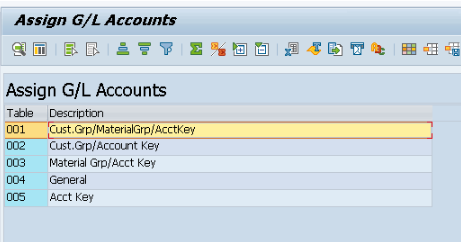
Below screen will appear. In total there are 9 columns out of which first 4 are simple to understand.
- Application – Its should be V. V is sales and distribution. Very straight forward. For more option, press F4 and check.
- Condition Type – This isn’t an SD condition type. This is condition type for Usage and Application. Don’t get confused this with SD condition type. Only 2 options will come as below. There might be more and I am not aware.
- KOFI – Accnt Determination
- KOFK – Acct Determ.with CO
- KOFI – Accnt Determination
- Chart of Account – This is Chart of account. Very simple to understand.
- Sales organisation – This is nothing but our company code.
So, first 4 items are clear an pretty simple.
Next 3 columns are important. 5th 6th and 7th. This are SD values. Let’s see where its coming from Billing document. If you relate this with Billing document, it will be easy to understand the concept.
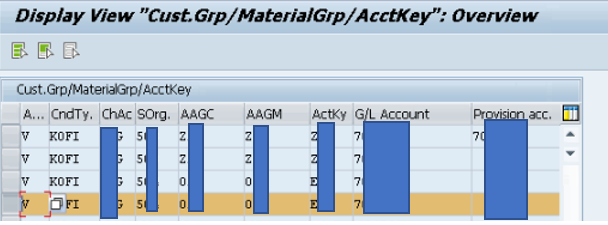
Cust Account Assignment Group (AAGC – Column 5).
Column AAGC. Cust Account assignment group. Where does it comes from billing document? See below screenshot.
Go to VF03. Give the billing document and press enter. Click on header data. If you see there are 5 tabs. It means its header. Entry is highlighted. This goes to column 5. Here Text is given and in VKOA numbers are given
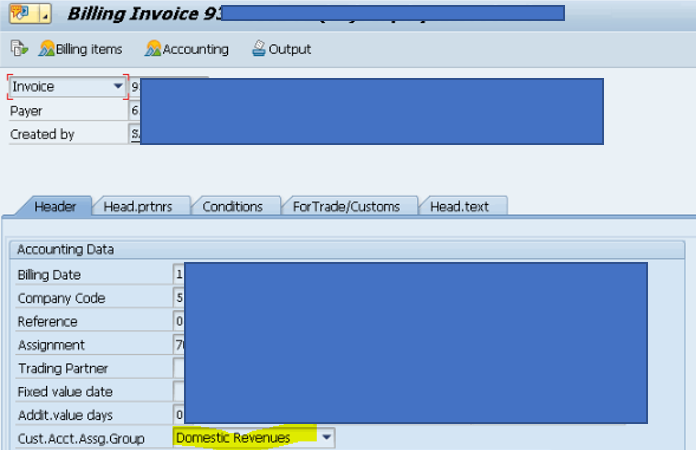
AcctAssmtGrpmat (AAGM – Column 6)
Column 6 AcctAssmtGrpmat comes from below highlighted field. This comes from Line item. Here Text is given and in VKOA numbers are given.

Account Key
Account key is the 7th column. Where is it coming from? In Condition tab below, Click on analysis button.
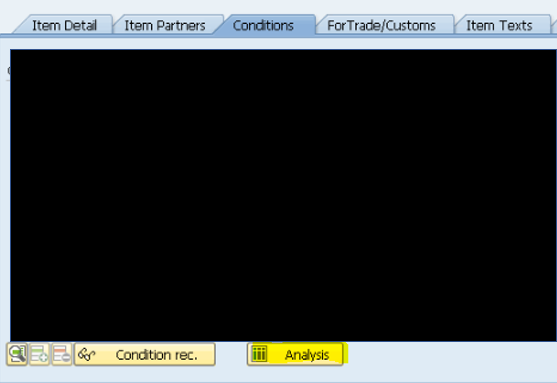
Below screen will appear. Condition type is highlighted in yellow.
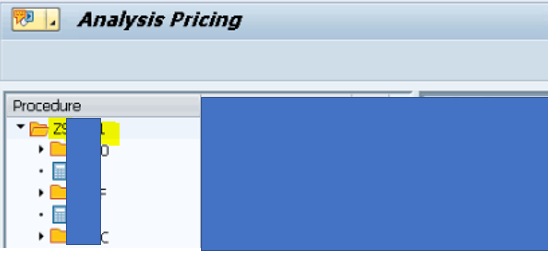
Go to V/08. Select above pricing procedure and click on control.
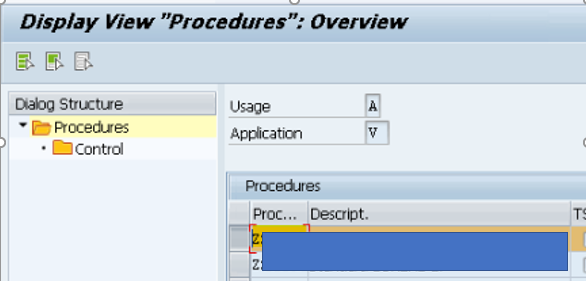
Below entries will be displayed. If you see column Acc., there are entries for ERL. This will come in column 7.

In column 8 and 9 there are gl accounts. This gl accounts are provided by Finance team.
For column 8, gl is picked up and documents are posted. But for 9 its accrual and I am not aware of that.
Exercise
- Identify few Billing documents with Accounting document posted
- Begin the search from Billing document to VKOA.
- Try few documents and your Basic FI-SD integration concept will be Clear.
- Other table in VKOA are similar or with lesser value option.









